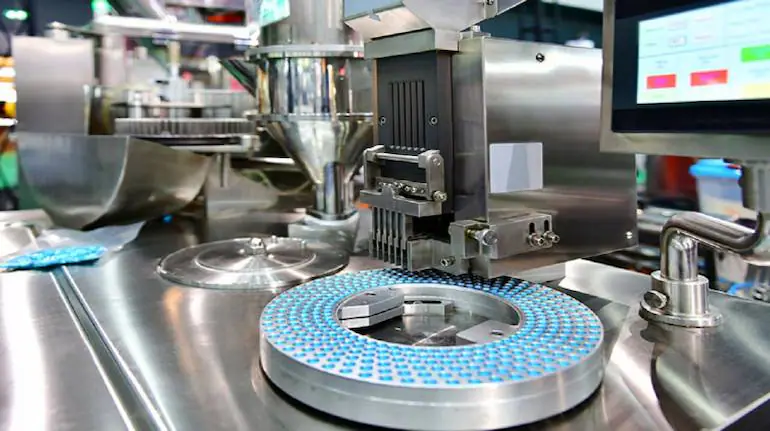Guardians of Quality: A Comprehensive Guide to GMP Standards in Pharmaceutical Production

Good Manufacturing Practices (GMP) form the cornerstone of modern pharmaceutical production. In a sector where the smallest deviation can jeopardize patient health, GMP standards ensure that every tablet, capsule, syrup, or injection is manufactured under strict guidelines of safety, consistency, and quality. These standards are not just regulatory requirements; they are ethical commitments to safeguard human lives.
Pharmaceutical companies operate in a highly sensitive environment where consumer trust is directly linked to the reliability of their products. Errors in drug manufacturing are not merely business risks—they can result in severe consequences, including regulatory penalties, product recalls, and, most importantly, harm to patients. GMP provides a structured framework to minimize these risks by enforcing quality checks at every stage, from raw material sourcing to final packaging.
GMP compliance is mandatory across the globe, with regulatory bodies such as the U.S. FDA, European Medicines Agency (EMA), and the World Health Organization (WHO) setting standards that manufacturers must meet. India, as one of the world’s largest producers and exporters of medicines, particularly generic drugs, follows WHO-GMP guidelines to ensure international market acceptance.
Key Reasons Why GMP Is Vital :
- Patient Safety First – The foremost goal of GMP is to protect patients from contaminated, substandard, or mislabeled drugs. Safe medicines translate directly into patient trust.
- Global Market Access – Compliance with GMP standards is often a prerequisite for exporting medicines. Without certification, companies risk losing access to lucrative markets.
- Consistency in Quality – GMP ensures that every batch of medicine produced is identical in strength, purity, and performance, reducing variability and risk.
- Regulatory Approval – New product launches and continued operations require proof of GMP compliance during audits and inspections.
- Brand Reputation – Trust once lost is hard to regain. GMP helps companies build and maintain credibility with healthcare professionals and patients alike.
- Minimized Risk of Recalls – A recall not only damages brand image but also incurs massive costs. GMP prevents errors that might otherwise lead to recalls.
- Operational Efficiency – With standardized processes and documentation, companies reduce waste, avoid mistakes, and improve productivity.
In short, GMP is not just a regulation—it is a philosophy of pharmaceutical manufacturing that prioritizes life above all else.

Core Pillars of GMP Standards
Adhering to GMP standards requires a comprehensive approach that covers all aspects of pharmaceutical production. Each principle is interconnected, ensuring that quality is embedded into the product rather than tested at the end.
Core Principles of GMP in Pharma
- Quality Management Systems (QMS)
A robust QMS integrates all production and quality assurance processes under a unified system. It includes risk assessments, corrective and preventive actions (CAPA), deviation handling, and document control.
- Personnel and Training
Trained personnel are critical for GMP compliance. Employees must understand hygiene standards, SOPs, safety requirements, and quality responsibilities. Regular training ensures they stay updated with changing regulations and technology.
- Premises and Equipment
Facilities must be designed to prevent contamination, with proper segregation for different processes. Equipment must be validated, calibrated, and maintained to ensure consistent performance.
- Raw Material Control
GMP mandates that all raw materials are sourced from certified vendors, tested for quality, and stored under appropriate conditions. This ensures the final product meets all specifications.
- Documentation and Record-Keeping
Accurate records of every process—from equipment calibration to batch production—are essential. Proper documentation ensures traceability, accountability, and regulatory compliance.
- Production and Process Control
Every stage of manufacturing, from weighing ingredients to packaging, must follow strict SOPs. Process validation confirms that methods consistently produce products meeting specifications.
- Hygiene and Sanitation
Controlled environments, cleanroom protocols, and personal hygiene standards reduce contamination risks. Regular microbial monitoring and cleaning validation are integral parts of GMP.
- Quality Control and Laboratory Practices
Rigorous testing of raw materials, in-process samples, and finished products ensures compliance with pharmacopeial standards. Only batches meeting quality standards are released.
- Audits and Inspections
Internal audits and regulatory inspections verify ongoing GMP compliance. Findings are addressed through corrective and preventive measures, fostering continuous improvement.
These pillars represent the non-negotiable foundation of GMP compliance, ensuring that medicines produced are safe, effective, and reliable.
Challenges in Implementing GMP Compliance
Implementing Good Manufacturing Practices in pharmaceutical production is challenging and requires constant vigilance. While GMP principles focus on safety, quality, and consistency, applying them in daily operations involves ensuring trained personnel, proper equipment maintenance, validated processes, and accurate documentation. Companies must also manage supply chain compliance and adapt to evolving regulations, all while balancing costs and productivity. For specialized products like sterile injectables or biologics, maintaining controlled environments and precise process control adds additional complexity. Meeting these challenges consistently is essential to ensure that all medicines produced are safe, effective, and reliable.
Key Challenges :
- High Cost of Compliance : Implementing GMP standards requires significant investment in infrastructure, machinery, and skilled personnel. Small and mid-sized companies often find it difficult to allocate resources for cleanrooms, automation, and monitoring systems. Proper funding is critical to ensure that quality and safety are never compromised.
- Skilled Workforce Shortages : Compliance depends on trained personnel who understand GMP principles and SOPs. Regular training and retention of qualified staff remain a constant challenge for many manufacturers. Without a skilled workforce, even the best systems can fail to maintain required standards.
- Complex Documentation and Record-Keeping : Maintaining accurate and complete records is critical for audits and inspections. Any missing or incorrect documentation can lead to non-compliance, regardless of actual production quality. Proper documentation also helps in tracing deviations and implementing corrective actions efficiently.
- Evolving Global Standards : Regulations change frequently to accommodate new technologies and safety protocols. Companies must continuously monitor updates and adapt processes to remain compliant across multiple markets. This requires dedicated teams and proactive regulatory management.
- Supply Chain Risks : GMP compliance extends beyond internal processes. Vendors and suppliers must also meet quality standards, and any deviation can compromise the final product. Regular supplier audits and quality agreements are essential to maintain consistency and safety.
- Technological Barriers : Upgrading to automated, digital systems for monitoring, documentation, and quality control requires capital and technical expertise. Smaller firms may struggle to implement these advancements efficiently. Without modern tools, human error becomes a significant risk.
- Cross-Border Compliance : Exporting medicines introduces additional challenges as different countries have varying GMP requirements. Companies must carefully manage production, documentation, and validation to meet international standards and avoid shipment delays or regulatory issues.
- Managing Deviations and Recalls : Even with strict controls, deviations can occur. Companies must have clear systems for investigation, corrective action, and recall management to minimize risks and protect patients. Prompt and efficient handling preserves both safety and reputation.
- Maintaining a Culture of Quality : GMP is not just procedural; it requires a culture of quality throughout the organization. Leadership must instill the importance of compliance at every level to ensure consistent adherence. Employees should view GMP not as a requirement but as a shared responsibility for patient safety.
- Balancing Innovation and Compliance : New therapies and advanced drug delivery systems require innovative processes while still complying with GMP. This balance between innovation and regulation is often difficult but essential to meet modern healthcare needs and regulatory expectations.
The Future of GMP – Trends, Innovations, and Global Impact
The pharmaceutical industry is rapidly evolving, and GMP standards are evolving alongside it. The focus is moving from mere compliance to integrating advanced technology, sustainability, and patient-centric approaches. Digitalization, automation, and real-time monitoring are revolutionizing how GMP is implemented, making it easier to maintain quality while increasing efficiency.
Emerging Trends in GMP :
- Digital Transformation and Industry 4.0
Integration of AI, machine learning, and IoT allows real-time monitoring, predictive maintenance, and automated documentation. Digital batch records improve traceability and reduce human error.
- Continuous Manufacturing
Moving from batch production to continuous manufacturing ensures higher consistency, reduced waste, and faster production cycles, while remaining GMP-compliant.
- Risk-Based Approaches
Regulatory authorities encourage focusing resources on critical processes that impact product quality, enabling more efficient and targeted compliance efforts.
- Sustainability in Pharma Production
Eco-friendly practices, energy-efficient facilities, and waste reduction are becoming integral to GMP compliance, aligning quality with environmental responsibility.
- Global Harmonization of Standards
Efforts are underway to align GMP requirements across countries, making international trade more seamless and reducing the burden of multiple audits.
- Patient-Centric Quality Models
Future GMP frameworks emphasize patient needs, ensuring medicines are safe, effective, accessible, and easy to administer. Personalized medicines and advanced therapies require specialized GMP approaches.
- Data Integrity and Cybersecurity
As manufacturing relies on digital systems, ensuring data integrity and protection against cyber threats becomes a key part of compliance.
Conclusion
GMP standards remain the foundation of trust in pharmaceuticals. They safeguard patient health, support regulatory compliance, and drive global competitiveness. The future of GMP lies in embracing digital tools, sustainability, and patient-focused quality, enabling manufacturers to produce medicines that are safe, effective, and accessible worldwide. By embedding GMP into their culture, companies not only meet regulatory requirements but also establish themselves as trusted leaders in healthcare.
Explore Related Blogs
Stay informed with our curated selection of similar blogs, offering expert perspectives on pharmaceutical trends, regulatory updates, and product innovations.
These articles are designed to help healthcare professionals, partners, and businesses stay ahead in an ever-evolving industry. Explore more to deepen your knowledge and make informed decisions.